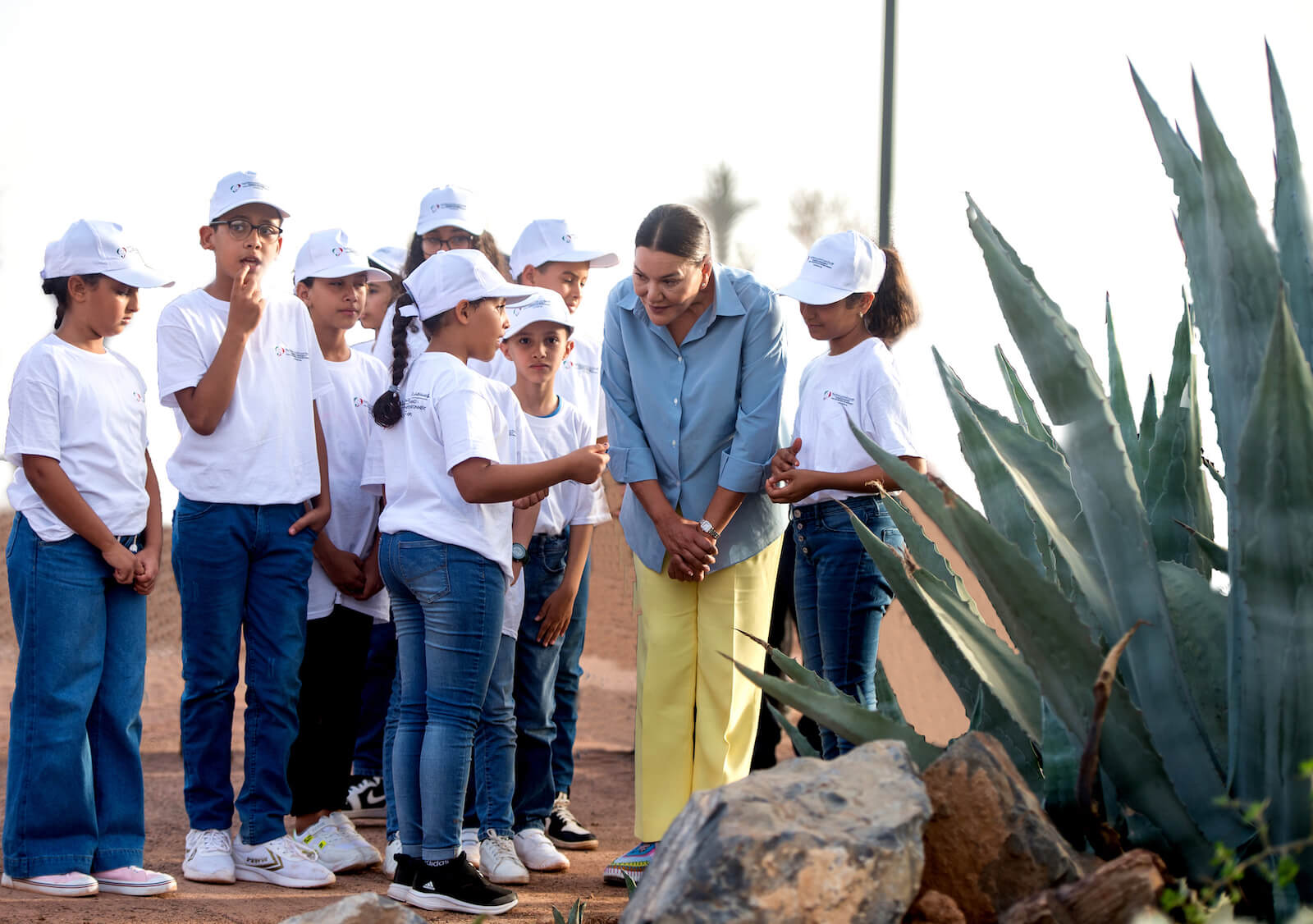This Tuesday, October 4, Her Royal Highness Princess Lalla Hasnaa, President of the Mohammed VI Foundation for Environmental Protection formally reopened Ghabat Chabab, a large urban park rehabilitated after several years of redevelopment work. The rehabilitation project was carried out with the Urban Commune of Marrakech, the Wilaya of Marrakech Safi, the State Property Directorate and the Directorate General for Local Authorities [Direction des Domaines de l’État et la Direction Générale des Collectivités Territoriales]
Ghabat Chabab, an olive grove whose history merges with that of Morocco
In the aftermath of independence, His Majesty King Mohamed V, called upon the youth to get involved in the countless large-scale programs initiated under his reign to accelerate the economic and social development of the country. One such program was the reforestation of an arid area south of the city of Marrakech, which involved planting thousands of olive trees over hundreds of hectares. This is how “Ghabat Chabab”, a vast and famous urban olive grove of the ochre city, was named in memory of the young people who contributed to its birth.
Sustainable development education and awareness building through a program to rehabilitate historic parks and gardens
As part of its mandate to educate and raise awareness about sustainable development, the Mohammed VI Foundation for Environmental Protection works with its partners, as part of its “Rehabilitation of Historic Gardens and Parks” program, to preserve sites that are of high historical and ecological value, in particular by integrating educational spaces. Rehabilitated under this program, the Ghabat Chabab olive grove park, which stretches over an area of 120 hectares, acts as both an agricultural production space (olive orchard operated) and a lively urban park boasting attractions, sports, relaxation, etc.
Work began in 2014 to return this space to its residents and loyal visitors. The first steps consisted in preserving what already exists by planting 1160 olive trees and rehabilitating or digging 3 wells and equipping them with solar-powered pumps. In addition to the olive trees and to maintain the local biodiversity, 3,420 trees and 64,000 shrubs were planted in other areas.
The works also concerned the water retention basins and the underground and surface irrigation channels, which made it possible to safeguard them and put them back into production. A localized irrigation system to save water has been implemented with the rehabilitation of wells and the installation of an ecological management system (solar energy), so that the entire planted area can be watered independently. A drip irrigation project using treated wastewater from the Marrakech sewage and treatment plant is also planned.



An educational path designed by ENA laureates
The Ghabat Chabab educational path was designed by students of the National School of Architecture of Rabat (ENA) through an ideas competition launched by the Foundation as part of its sustainable development education mandate. This federative initiative of the Foundation is part of an experimentation and evaluation process of the creative potential of young ENA students, as well as the embodiment of the youth commitment, to bring out innovative concepts and solutions in terms of awareness and education to the environment and sustainable development.
The landscape concept of Ghabat Chabab thus envisioned 6 educational and recreational stations, 4 of which were submitted to the ideas competition launched with ENA in 2020, with modules on the following themes:
- Station 1: The Ghabat Chabab olive grove;
- Station 2: Trees in the City;
- Station 3: The biodiversity of the region of Marrakech ;
- Stop 4: Plant adaptation in dry environments;
- Station 5: The insect garden and pollination;
- Station 6: The Khettara.
The Ghabat Chabab olive grove, a place of life and leisure
The second part of the project consisted in equipping this space with sports and leisure facilities to consolidate its original purpose. The olive grove has signage, solar lighting, several perolas, shady places and comfortable urban furniture to encourage visitors to relax and feel at home. Finally, a 3 km cross-country course drawn according to the recommendations of the Royal Moroccan Athletics Federation now has all the characteristics of a professional circuit.
About the program: Rehabilitation of historic parks and gardens
The Mohammed VI Environmental Protection Foundation has already rehabilitated in the Arsat Moulay Abdeslam Marrakech in 2004, a magnificent princely garden of 8 ha near the Koutoubia. Since 2007, it has also been leading the Safeguarding and Development program of the Marrakech palm grove to preserve this emblematic space created with the city and which has long nourished it. In Morocco, the Foundation has also rehabilitated the Exotic Gardens in Bouknadel (2005), Jnane Sbil in Fez (2010), L’Hermitage in Casablanca (2011), the Errahma Garden in Dakhla (2019) and Lahboul in Meknes (2021).
In order to discover Ghabat Chabab, kindly consult the brochure using the following QR code:











